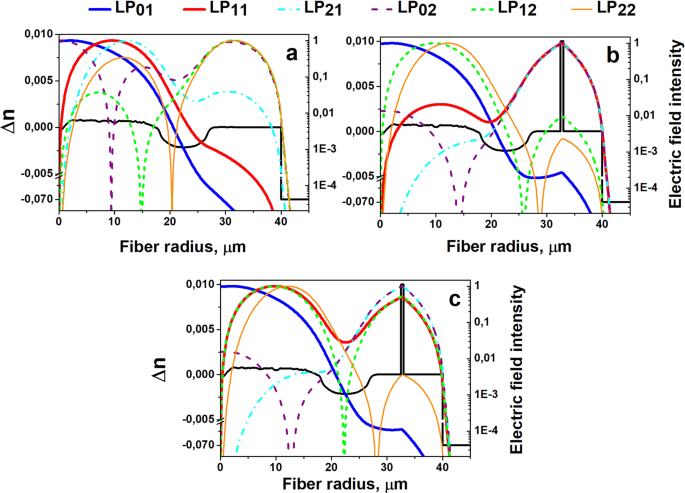Researchers have developed a new method to improve the performance of optical fibers by suppressing unwanted high-order modes that can interfere with signal transmission. The team investigated embedding absorbing rods into the outer layer, or cladding, of the fiber as a way to selectively eliminate these disruptive modes. Their experiments showed that by strategically placing multiple absorbing rods within the cladding, they could effectively target and remove specific groups of higher-order modes. This approach offers advantages in fabrication, as the core of the fiber and the absorbing rods can be manufactured separately with precise control over their dimensions before being combined.
In their design, the scientists utilized three absorbing rods positioned equidistant from the fiber’s central axis, forming an equilateral triangle. This arrangement was found to maximize the disruption of higher-order modes. These rods work by resonantly coupling with and drawing out the unwanted modes from the fiber core. Visualizations confirmed that the presence of the rods significantly distorts the high-order modes, making them susceptible to absorption.
The research team fabricated a fiber incorporating these absorbing rods and conducted experiments to validate their design. They successfully demonstrated that their fiber design effectively suppressed high-order modes, achieving a state of single-mode propagation where only the fundamental signal-carrying mode remained. The fiber exhibited low loss for the fundamental mode and proved to be relatively insensitive to bending, maintaining its performance even when curved in practical applications. Measurements showed that the absorbing rods effectively attenuated unwanted modes, while the fundamental mode loss remained low, indicating efficient and selective mode suppression. This new fiber design represents a significant step forward in improving the quality and reliability of optical fiber communication systems.

Leave a Reply